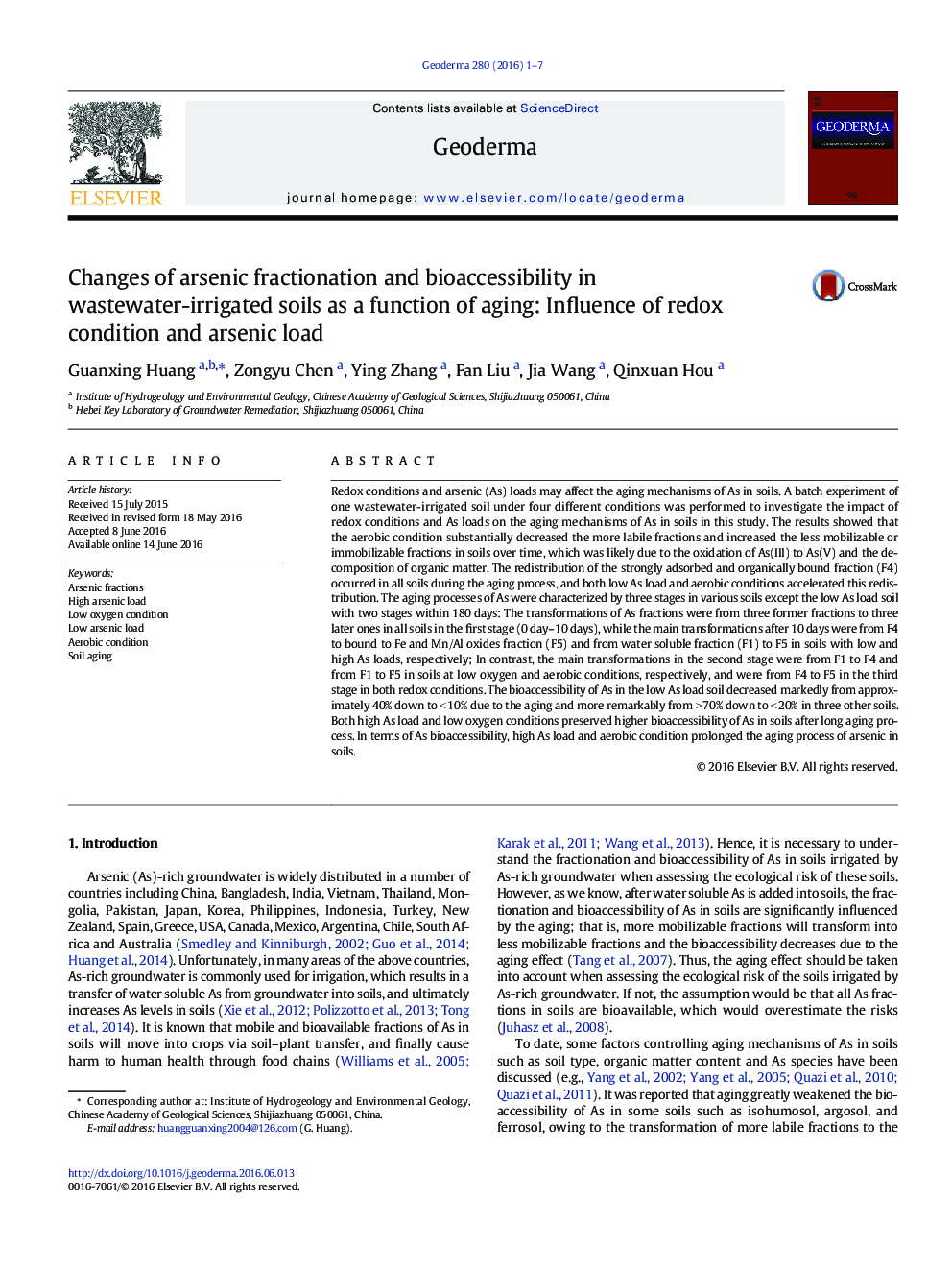| Article ID | Journal | Published Year | Pages | File Type |
|---|---|---|---|---|
| 4572829 | Geoderma | 2016 | 7 Pages |
•Aging processes of As in soils affected by As loads and redox condition after 10 d.•Aerobic condition increased the variation of all As fractions except F2.•Low As load and aerobic condition accelerated the redistribution of As F4.•High As load and low oxygen condition remained higher bioaccessibility of As in soils.•High As load and aerobic condition extended the aging process of As in soils.
Redox conditions and arsenic (As) loads may affect the aging mechanisms of As in soils. A batch experiment of one wastewater-irrigated soil under four different conditions was performed to investigate the impact of redox conditions and As loads on the aging mechanisms of As in soils in this study. The results showed that the aerobic condition substantially decreased the more labile fractions and increased the less mobilizable or immobilizable fractions in soils over time, which was likely due to the oxidation of As(III) to As(V) and the decomposition of organic matter. The redistribution of the strongly adsorbed and organically bound fraction (F4) occurred in all soils during the aging process, and both low As load and aerobic conditions accelerated this redistribution. The aging processes of As were characterized by three stages in various soils except the low As load soil with two stages within 180 days: The transformations of As fractions were from three former fractions to three later ones in all soils in the first stage (0 day–10 days), while the main transformations after 10 days were from F4 to bound to Fe and Mn/Al oxides fraction (F5) and from water soluble fraction (F1) to F5 in soils with low and high As loads, respectively; In contrast, the main transformations in the second stage were from F1 to F4 and from F1 to F5 in soils at low oxygen and aerobic conditions, respectively, and were from F4 to F5 in the third stage in both redox conditions. The bioaccessibility of As in the low As load soil decreased markedly from approximately 40% down to < 10% due to the aging and more remarkably from > 70% down to < 20% in three other soils. Both high As load and low oxygen conditions preserved higher bioaccessibility of As in soils after long aging process. In terms of As bioaccessibility, high As load and aerobic condition prolonged the aging process of arsenic in soils.
